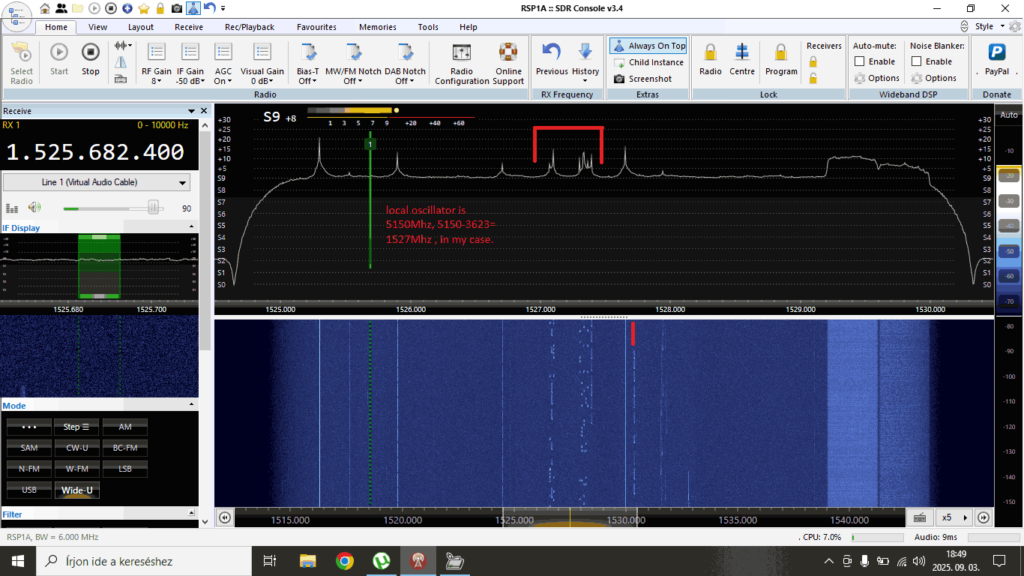Decoding ADS-C with a Cheap Aliexpress LNB and SDRplay RSP1B
Thank you to Nagy István for sharing with us his setup for decoding ADS-C with a 180cm prime focus dish, a cheap Aliexpress LNB, an Aliexpress bias tee, and an SDRplay RSP1B.
István receives the ADS-C signal from the Inmarsat 4A-F4 satellite, which he can see from his home in Hungary.
István also notes the following information about the Chinese LNB:
This LNB original for DVB reception, but it works on Inmarsat reception, 3.6Ghz where ADS-C signals are, without any modification... But sometimes you need correcting frequency because of LNB oscillator drifting. I don't use dielectric plate, I don't have any material for this, at the moment.
Compared to ADS-B, which continuously broadcasts an aircraft’s GPS position and velocity to any ground station or nearby aircraft, ADS-C instead sends position reports via satellite, and is especially used over oceans and remote areas without ADS-B ground receivers.
However, ADS-C is relatively complex for hobbyists to receive due to the need for a large satellite dish and LNB to convert the 3.6 GHz frequency down to a frequency receivable by most SDRs. However, fortunately, as István shows, the LNB can be obtained cheaply these days.

It is great to see more people have a go at this very tricky, but very rewarding mode.
The LNB linked has some quesitons…. The dual output units tested in the past have all been sub-standard vs single output for some reason.
The LNB’s with 5G interference filters have been proven to strongly attenuate the ADSC signal which is just below the typcial C-Band TV use this LNB is made for, so its best to get a non-5G filtered LNB.
The signal from Inmarsat is circular polarized, so not running a dilectric is also reducing the signal by quite a bit. Some scrap PCB with no copper can be used as a depolizer. Worth testing that option out – you only need something the size of a matchbox to go in the throat of the LNB.
The LNB downconversion frequency drift is a real problem for long-term running. Many people have tried a lot of different methods to try and keep the temperature cycle of the LNB constant, from wrapping it in insulation to using heaters to keep it stable above ambient temperature, but the only real solution is to use a GPSDO. GPS disciplined oscillator. It takes the very stable GPS frequency and derives a very stable 10MHz frequency, which replaces the crystal in the LNB and provides rock-solid down conversion regardless of the air temperature.
Lastly, dish tracking is required because the dish has a sufficiently narrow beamwidth, and the Inmarsat C-band downlink spot beam is a spot, whereas the wider L-Band downlink signal is not.
Converting the NORAD TLE to tracking data for a motor connected to the elevation motor connected to the dish is the most common way to provide this.
If you just want a proof of life signal, then the video will show one way to do that. Taking the feed to the next level of being stable for days at a time is a bit more challenging, but there are several people who have done it, and a quick Google on the topic will guide you to various websites that share the steps required.